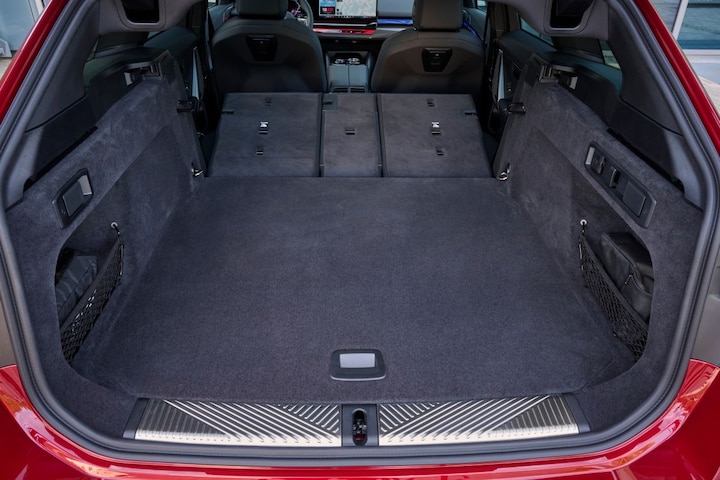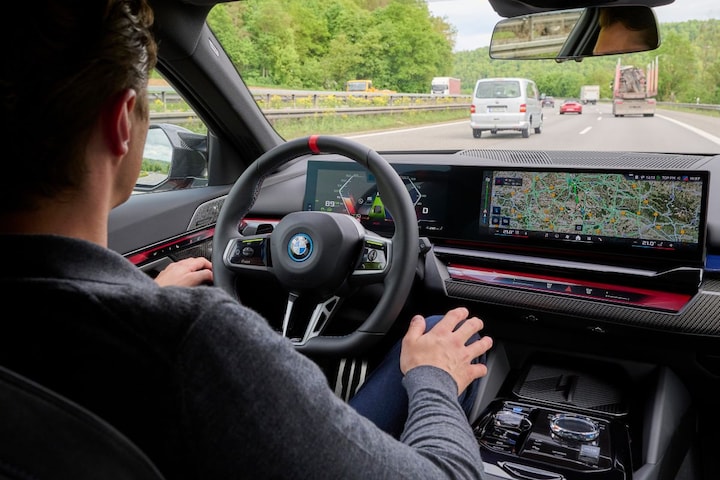We test the BMW i5 Touring, BMW’s electric station wagon. Chassis keeps the heavyweight i5 under control with technical magic.
Station wagons are rapidly declining in popularity in favor of SUVs and crossovers. BMW is going against the grain by even introducing an electric version of the new 5 Touring. We drove the big i5 M60 Touring.
An electric station, that is unique?
Rare for sure, but not unique. There is already the Porsche Taycan Sportturismo and the Volkswagen ID7 Tourer, not to mention what Chinese such as Nio and MG have on offer. But SUVs and crossovers are certainly preferred by many manufacturers. In the case of the BMW i5, which has the same basis as the BMW 5 Series with a petrol engine, it is an easy step for the brand to also make an electric version of the new 5-Touring. But if we look at the classic competitor Mercedes, for example, that manufacturer does have an E-Class Estate on the price list, but the electric EQE is only available as a sedan. If you want five doors, you should go for the higher EQE SUV. And then the advantage of a station wagon immediately becomes apparent: the i5 Touring has 570 liters of luggage space and the EQE SUV only 520. Compare that with the E-Class Estate with its 615 liters and the difference is evident. Reason for us to emphasize once again that a station wagon has much more practical use than an SUV, but we realize that this is a losing battle.

Are there any disadvantages to that shared platform for the 5 series?
Yes. This means there is still room for the propeller shaft near the legs of the rear passengers, which is an unnecessary loss of space. The car also lacks a frunk, with a lot of empty space in the nose. A car that is designed as an EV can be used much more intelligently. But other than that, our experience is that BMW succeeds very well in making the electric versions drive like the petrol variants. And the i5 is no exception. “We know it can never drive exactly the same, but the aim is the same,” explains an engineer.
 It holds 570 liters, enough for a nice holiday.
It holds 570 liters, enough for a nice holiday.
Okay, but how does that BMW i5 Touring drive?
We notice that the nose is lighter due to the lack of a heavy fuel engine, which helps with turn-in. However, the entire car is heavier. The weight is low and that is great, but braking or quickly taking tight corners always push the kilos through. The big M60 version we drive has a whole arsenal of chassis techniques to keep the kilos in check as much as possible. Four-wheel steering, four-wheel drive active stabilization, dynamic dampers and active steering. The technical wizardry is fabulous and if desired you can make nasty corners with the car, which is also sickly fast thanks to its 601 thanks to two electric motors. We do miss a bit of the old, familiar BMW feeling where there is always some movement in the carriage and makes everything feel more natural. An M340i is noticeably more fun to drive, although this may be a given due to the car’s lower weight. Our tip is to simply go for the eDrive40 version with one engine and 370 hp. You get your fill quickly and unlike the iX, you also get the same battery pack as in the M60: 84 kWh. This will give you more than 500 WLTP kilometers, but count on just under 400 in practice depending on your driving behavior. Fast charging is possible at a neat 205 kW and the M60 has a 22 kW AC charger on board as standard.

A beautiful cockpit with an abundance of multimedia.
Multimedia was a thing with the sedan
Here also. The cockpit is as we already know it from the sedan: luxurious and ultra-modern, with an overkill of options, systems, multimedia screens and active assistance systems. Very impressive, although it doesn’t make things any clearer. What we want to highlight is BMW’s new highway assist, which enables automatic driving on the highway up to 130 km/h, without having to keep your hands on the wheel. So not a beep or warning every 15 seconds, but a real ‘hands-off’. The system keeps a close eye on traffic and also changes lanes semi-automatically if you have to pass a car, or if it sees that the lane on your right is free. All you have to do is look in the exterior mirror of the relevant side and the car will change lanes fully automatically. This works amazingly well and above all very fast, especially compared to all existing (fairly worthless) systems from different brands where you have to operate the turn signal yourself and it then takes ages before anything happens. The BMW now also looks far ahead and will move into a lane well in advance if you drive towards a truck at 130 km/h in the right lane. Unfortunately, the brand only has permission to use the system in a few countries and the Netherlands is not included. BMW is working hard on Europe-wide approval, but does not dare to say how long that will take.

Completely hands-free highway driving including lane change, it is possible!